Hair Loss
Hair getting thinner, falling out more, and small bald patches appearing. Worried about going completely bald or having pattern baldness. Hair growth products not working. Can aesthetic treatments help with hair loss?
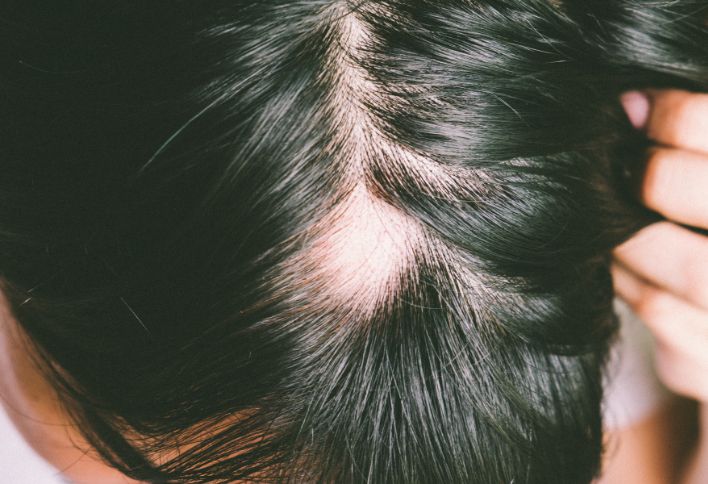
What is Hair Loss
Hair loss is normal, and we can lose around 50 to 100 hairs each day due to different factors. However, if hair loss becomes significant and continuous, it may lead to baldness.
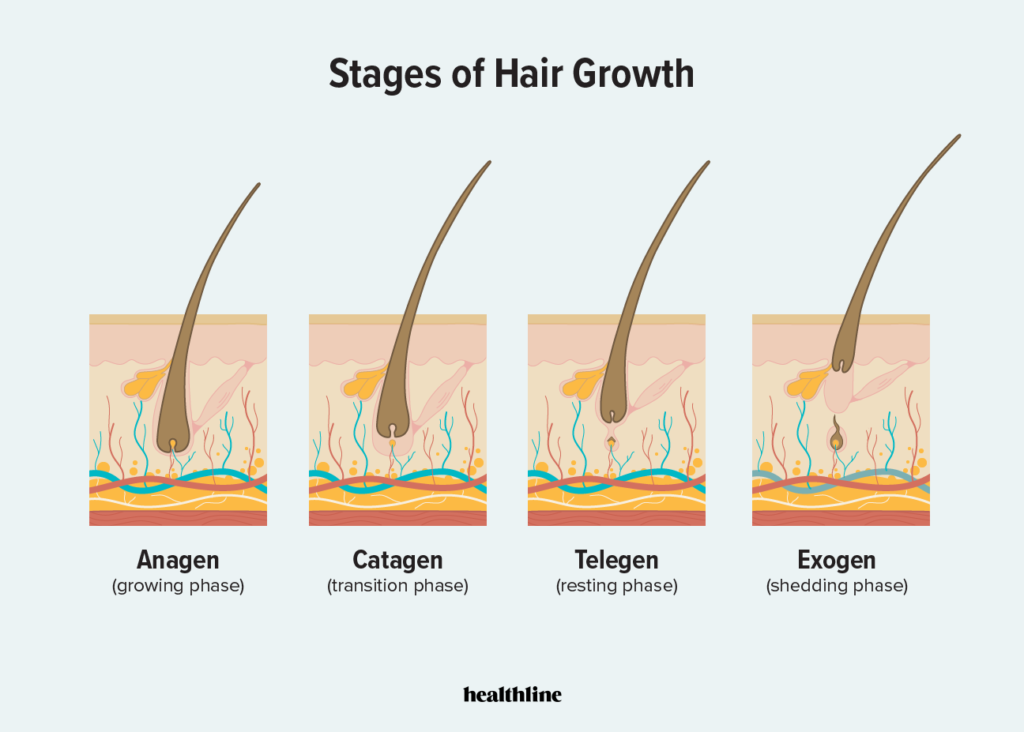
Our hair grows in a cycle with three phases: growing, transitioning, and resting. Maintaining a balance between the number of hairs entering each phase is important for healthy hair. Disruptions to this balance or damage to hair follicles can cause hair loss and baldness. Baldness not only affects appearance, but also self-confidence and can lead to psychological consequences such as depression, insomnia, and anxiety. Hair loss should be treated appropriately.
Symptoms
Hair loss is noticeable when the part line widens, hair becomes thin at the top of the head, and falls out easily during washing or brushing.
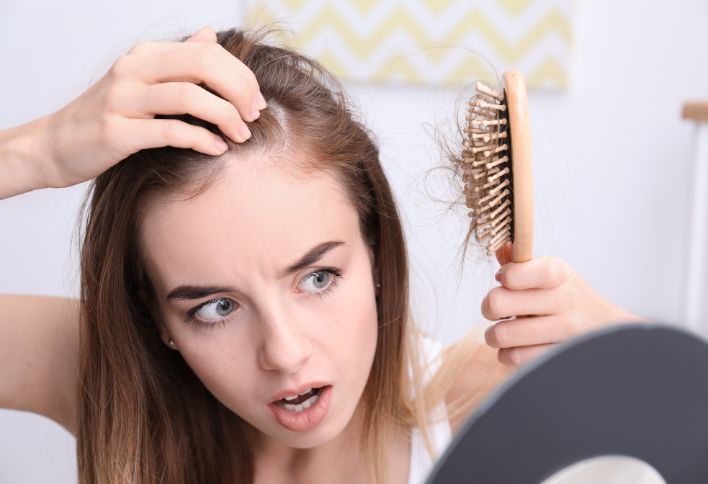
Assess hair loss by gently pulling a small section of hair from the root and sliding your fingers along the strand. Repeat 5-6 times and count how many hairs are pulled out each time. If more than 3-4 hairs come out during each pull, it may indicate hair loss.
Causes
Hair loss is caused by the health of the scalp and hair follicles. Just like how plants need good soil, hair needs healthy follicles. Each follicle can grow 1 to 5 hairs and will eventually die after 15 hair falls. Unfortunately, follicles cannot be replaced. We hope new hair growth will replace fallen hair.
Hair loss can be inherited and acquired:
Inherited hair loss
Genetics, like congenital ectodermal dysplasia and congenital hypotrichosis, can cause hereditary hair loss.
Acquired hair loss
Hair loss can be caused by various factors such as mental health, surroundings, sleep and food habits, and illness. Acquired hair loss is more prevalent than inherited hair loss.
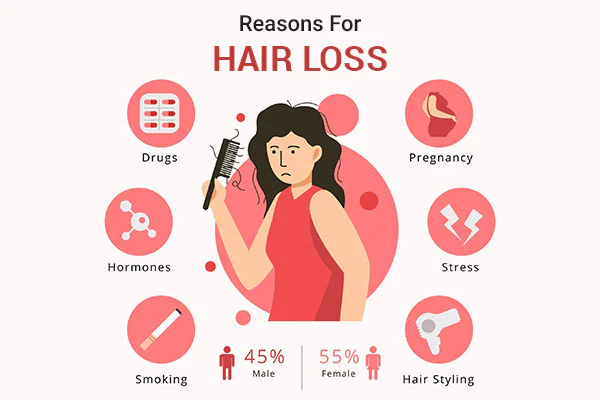
Risk factors of acquired hair loss:
○ Hormonal imbalance caused by consuming too much sugar or fat, poor sleeping habits, sedentary lifestyle, or overweight;
○ Psychological status. For example, high stress level can cause hair loss;
○ Androgen can cause baldness beginning above both temples, which is called androgenetic alopecia, male-pattern baldness, or seborrheic alopecia;
○ Declined level of female hormones or anaemia can cause hair loss;
○ Age. Hair loss is worsen with age;
○ Hair dying and perming cause hair loss by damaging the hair and scalp;
○ Some immune diseases such as lupus erythematosus, dermatomyositis, or scleroderma can cause hair loss;
○ Physical interactions such as X-ray exposure, hair burn, or hair damage from friction can cause hair loss;

Treatment
PRP therapy promotes hair regrowth by boosting growth factors and enhancing hair follicle strength, leading to improved hair growth conditions.
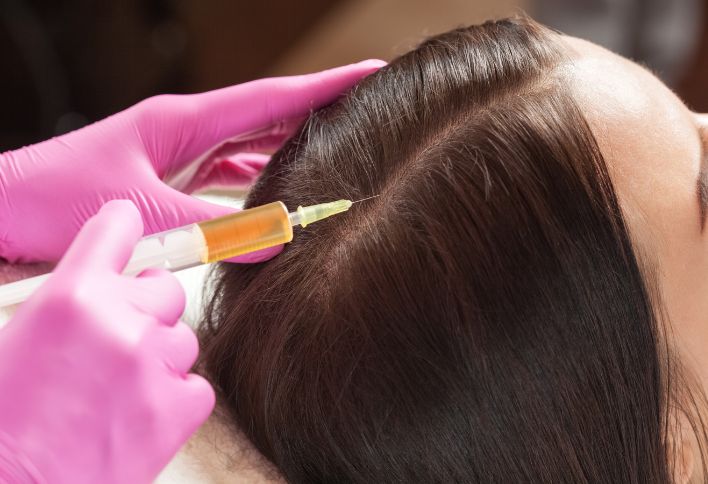
PRP, or Platelet Rich Plasma, is a plasma with high levels of platelets and growth factors that can improve skin and hair conditions and accelerate wound healing. PRP treatments are proven safe through certification from CE, ISO, SQS, and clinical studies in other areas. Research shows successful results in increasing hair thickness, reversing hair loss, and promoting hair growth.
How does PRP work
Procedure
- 1. Face-to-face consultation: Skinspire Laser&Skin Clinic provider will develop a unique PRP plan based on the client’s condition and desired results.
- 2. Pre-treatment preparation: Skinspire Laser&Skin Clinic provider will collect blood from clients and obtain concentrated platelets solution by centrifugation; Apply anaesthesia, clean, and disinfect the scalp.
- 3. PRP injection: Skinspire Laser&Skin Clinic provider will administer injection solution to the scalp by a qualified practitioner. Repeat injection in severe areas.
- 4. Post-treatment precautions.
Who is it for
- People who are prone to oily hair
- People with thin hair or wide part line
- People with severe problem of hair loss or baldness
- People who are looking for healthier and stronger hair
- People who start to see receding hairline
- People who wish to increase their hair thickness and fullness by non-hair transplant method
